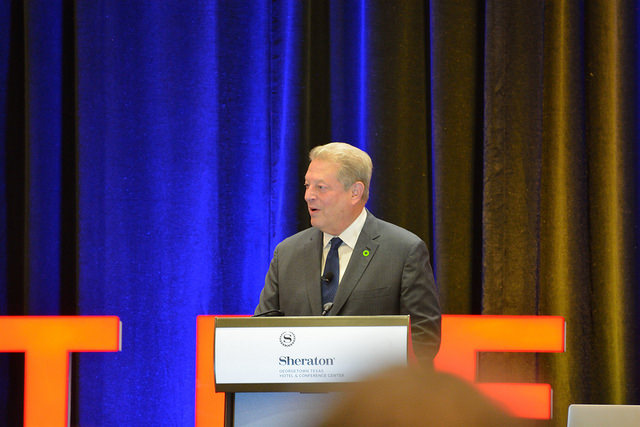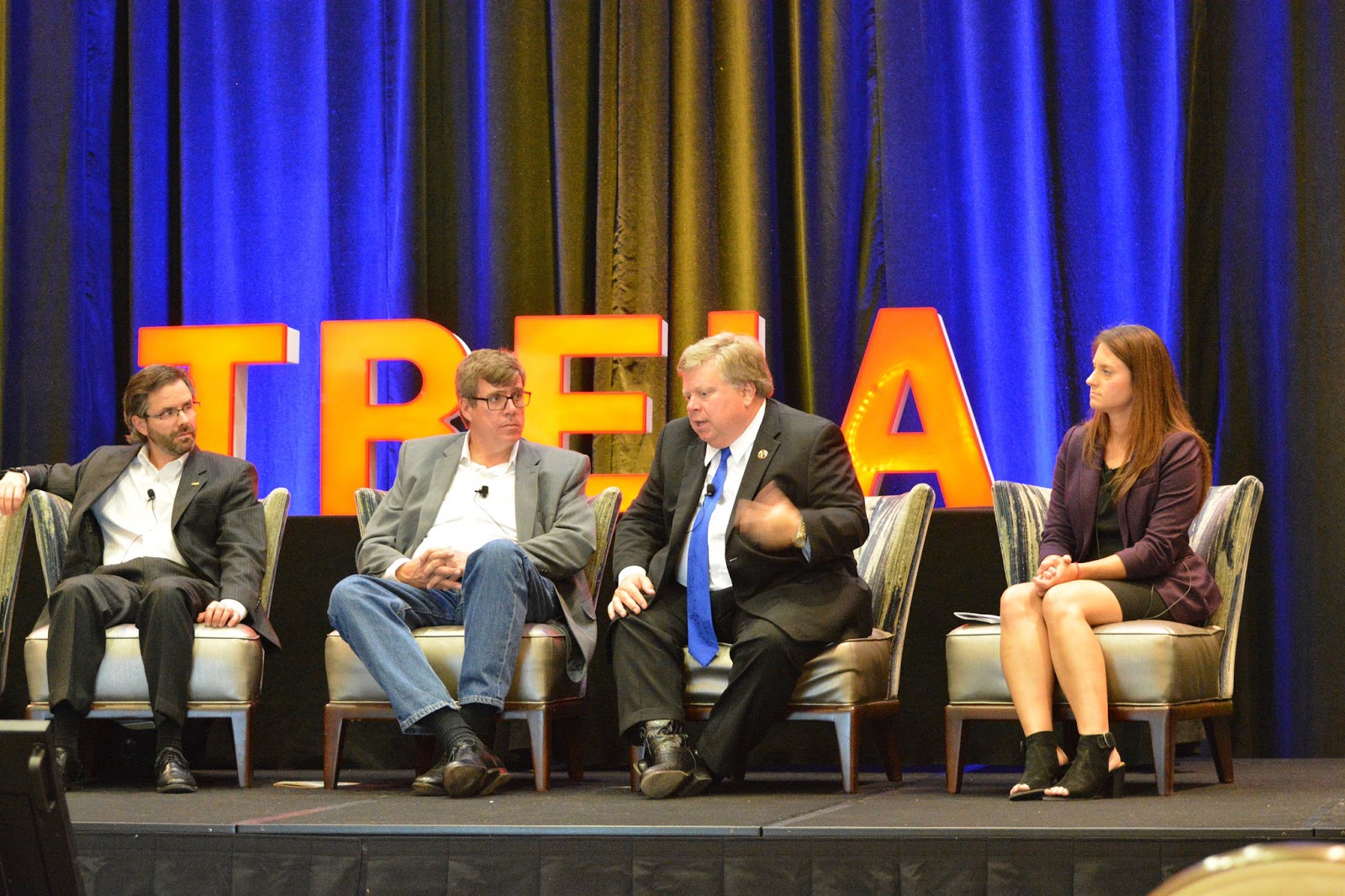By Drew O'Bryan, Sierra Club Lone Star Chapter Clean Energy Coordinator
At this year’s GridNEXT conference, hosted by the Texas Renewable Energy Industries Alliance (TREIA), leaders from across the clean energy industry proudly announced that renewables have arrived and are here to stay in the Lone Star State. The two-day event was appropriately located in Georgetown, Texas, which runs on 100% renewable energy and is featured in former Vice President Al Gore’s An Inconvenient Sequel documentary as an example of how renewable energy has become a means of saving money in a wind and solar-rich state.
The conference kicked off with a keynote address from Mr. Gore linking the devastation of this year’s extreme weather, from hurricanes in Texas, Florida, and Puerto Rico and wildfires in California, to the severity of the planet’s climate crisis. He emphasized catastrophic effects on Texas over the next century, highlighting Harvey as a new normal for flooding events, as the Gulf of Mexico heats up more and more each year, and showing that extreme heat and drought will increase the state’s risk of wildfires to make Texas the most vulnerable state to fires in the country.

Former Vice President Al Gore addressing GridNEXT Conference attendees in his keynote (Photo by SC Volunteer Ling Zhu)
The address wasn’t all doom and gloom though. The former Vice President pointed out that places like Georgetown are discovering that wind and solar energy are no longer technologies far off on the horizon, but rather industries that are directly competing with traditional fossil fuels to save consumers money. Gore also pointed out that these don’t have to be partisan issues; Georgetown Mayor Dale Ross, a Republican, was on-hand and featured both in the conference and in Gore’s movie.

Georgetown Mayor Dale Ross (third from left) speaking on a panel at TREIA's 2017 GridNEXT Conference (Photo by SC Volunteer Ling Zhu)
Texas already leads the nation in wind energy production, receiving nearly one-fifth of all its electricity from wind turbines. Texas has more potential for generating wind and solar power than any other state, so it’s no mystery electric utilities are starting to take notice of the booming industry.
At past energy industry conferences, I’ve noticed that the focus has typically been on new renewable technologies. A company might showcase a new way to assemble solar panels or an innovative idea for energy storage batteries, alongside evidence of the product’s viability from a prototype in the field (or a promise of a prototype in the near future). While there was still talk about new, leading-edge tech at GridNEXT 2017, the spotlight was placed on where renewable energy has become a dominant force and how the electric grid can adapt to meet the demands of clean energy.
Echoing the urgency expressed by Mr. Gore, speakers like Juan Torres from the National Renewable Energy Lab (NREL) discussed how the energy industry is at a turning point for renewables. An energy generating technology becomes economically viable when it reaches “price parity” with technologies already in use. This means that solar or wind energy would need to have the same cost per unit of energy as natural gas, coal, or nuclear. The boom in Texas wind energy resulted from cost parity being reached, but Torres pointed to the skyrocketing number of large-scale solar installations as evidence that solar power is on its way to reach parity as well.
But the expansion of renewables brings a few challenges. Our electrical grid, comprised of transmission wires, power plants, homes, and businesses, was originally designed primarily for “baseload” power plants. A baseload plant generates a predictable, steady stream of electricity and sends power to homes and businesses. Most coal power plants are rarely shut down and nuclear power plants may not shut down for years at a time. This is in stark contrast with wind and solar power whose energy generation ebbs and flows with the sun and wind. Much of the intermittency of wind and solar power can be accounted for by the wind blowing hardest at night and the sun shining exclusively during the day, meaning that weather forecasts can help predict when electric production might lull. That being said, renewables won’t begin to dominate the energy market unless there is something else added to the mix.
The solution to the intermittent nature of renewables is energy storage technology, especially large scale batteries. During a session titled “Planning Resources for the Future: Public Power is Moving Toward Further Integration of Renewables and Technology”, representatives from Austin Energy and Pedernales Energy Cooperative both discussed their utilities’ interest in pursuing energy storage. Austin Energy talked about its “SHINES” project during another panel discussion. SHINES uses batteries to store energy from solar panels to be dispatched when the utility needs power the most.
Overall, GridNEXT 2017 served as an announcement by the renewable energy industry that “we have arrived.” While Al Gore’s opening keynote warned of the consequences already being experienced from burning fossil fuels, each subsequent speaker announced that Texas is up for the challenge of reducing its emissions through renewable energy.
Note: Sierra Club, Lone Star Chapter, is a member of TREIA and was a “Gigawatt” sponsor of the event.